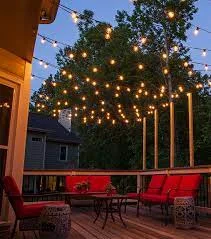Lighting is one of the most important yet often overlooked aspects of interior design. The right illumination can transform a dull space into a warm, inviting, and functional environment. Whether you’re redesigning your home or simply looking for ways to improve ambiance, these 15 expert lighting tips will help you create the perfect atmosphere.
1. Understand the Three Fundamental Types of Lighting
A well-lit room requires a combination of different lighting types to serve various purposes.
- Ambient Lighting – This is the primary source of light in a room, usually coming from ceiling fixtures, chandeliers, or recessed lights.
- Task Lighting – Designed for specific activities like reading, cooking, or working (e.g., desk lamps, under-cabinet lighting).
- Accent Lighting – Used to highlight artwork, architectural features, or decor (e.g., track lights, wall sconces).
Balancing these three layers ensures both functionality and aesthetic appeal.
2. Switch to Energy-Efficient LED Bulbs
Traditional incandescent bulbs waste a lot of energy as heat, whereas LEDs are far more efficient. Benefits include:
- Longer lifespan (up to 25,000 hours).
- Lower electricity consumption.
- Available in various color temperatures (warm to cool white).
Smart bulbs take it further by allowing remote control via smartphone, scheduling, and color adjustments.
3. Layer Your Lighting for a Balanced Effect
Relying on a single overhead light can create harsh shadows and uneven brightness. Instead, use a mix of:
- Ceiling lights for general illumination.
- Floor and table lamps for softer, diffused light.
- Spotlights or track lights for highlighting key areas.
This approach adds depth and dimension to any room.
4. Maximize Natural Light During the Day
Natural light enhances mood, reduces energy costs, and makes spaces feel larger. To make the most of it:
- Use light, sheer curtains instead of heavy drapes.
- Position mirrors opposite windows to reflect sunlight deeper into the room.
- Choose glossy or light-colored finishes for walls and furniture to amplify brightness.
5. Install Dimmer Switches for Adjustable Ambiance
Dimmers allow you to control brightness based on the time of day or activity. They’re perfect for:
- Creating a cozy atmosphere in the evening.
- Reducing glare when watching TV.
- Saving energy by lowering light intensity when full brightness isn’t needed.
6. Use Lighting to Define Different Zones
In open-concept homes, lighting can help separate functional areas:
- Pendant lights over the dining table.
- Floor lamps near seating areas.
- Recessed or under-cabinet lights in the kitchen.
This technique improves both aesthetics and usability.
7. Choose the Right Color Temperature
Light color significantly impacts mood and functionality:
- Warm White (2700K–3000K) – Ideal for living rooms and bedrooms (creates a relaxing vibe).
- Cool White (4000K–5000K) – Best for kitchens, bathrooms, and workspaces (enhances focus).
- Daylight (5000K–6500K) – Suitable for garages or task-oriented areas.
8. Reduce Glare with Proper Fixture Placement
Harsh lighting can cause eye strain. Solutions include:
- Using lampshades or diffusers to soften light.
- Positioning task lights at eye level (e.g., adjustable desk lamps).
- Avoiding direct overhead lights above computer screens.

9. Highlight Architectural and Decorative Features
Accent lighting draws attention to unique elements such as:
- Artwork – Picture lights or directional spotlights.
- Bookshelves – LED strip lights.
- Fireplaces or textured walls – Wall-mounted fixtures.
This technique adds character and sophistication.
10. Opt for Smart Lighting Solutions
Smart lighting systems offer convenience and energy savings:
- Voice control via Alexa, Google Assistant, or Siri.
- Automated schedules (e.g., lights turning on at sunset).
- Motion sensors for hallways and bathrooms.
11. Consider the Size and Scale of Fixtures
An oversized chandelier in a small room can feel overwhelming, while a tiny lamp in a large space may look out of place. Always measure before purchasing.
12. Use Mirrors to Enhance Light Distribution
Strategically placed mirrors can double the effect of both natural and artificial light. Try:
- A large mirror opposite a window.
- Mirrored furniture in darker corners.
- A gallery wall with small mirrors to scatter light.
13. Experiment with Decorative and Statement Lighting
Unique fixtures can serve as focal points:
- A bold chandelier in the dining room.
- Vintage-style bulbs in the bedroom.
- Geometric pendant lights in the living area.
14. Maintain Fixtures for Optimal Performance
Dust and dirt can dim lights over time. Regular cleaning ensures maximum brightness.
15. Don’t Forget Outdoor Lighting
Well-placed exterior lighting improves safety and curb appeal:
- Pathway lights for guidance.
- Wall-mounted lanterns near the entrance.
- String lights for a cozy patio ambiance.
Final Thoughts
Lighting is a powerful tool that influences both functionality and mood. By implementing these strategies, you can create a home that’s bright, efficient, and visually stunning. Start with small changes and gradually refine your lighting setup for the best results.
Would you like personalized recommendations for your space? Let us know in the comments!
